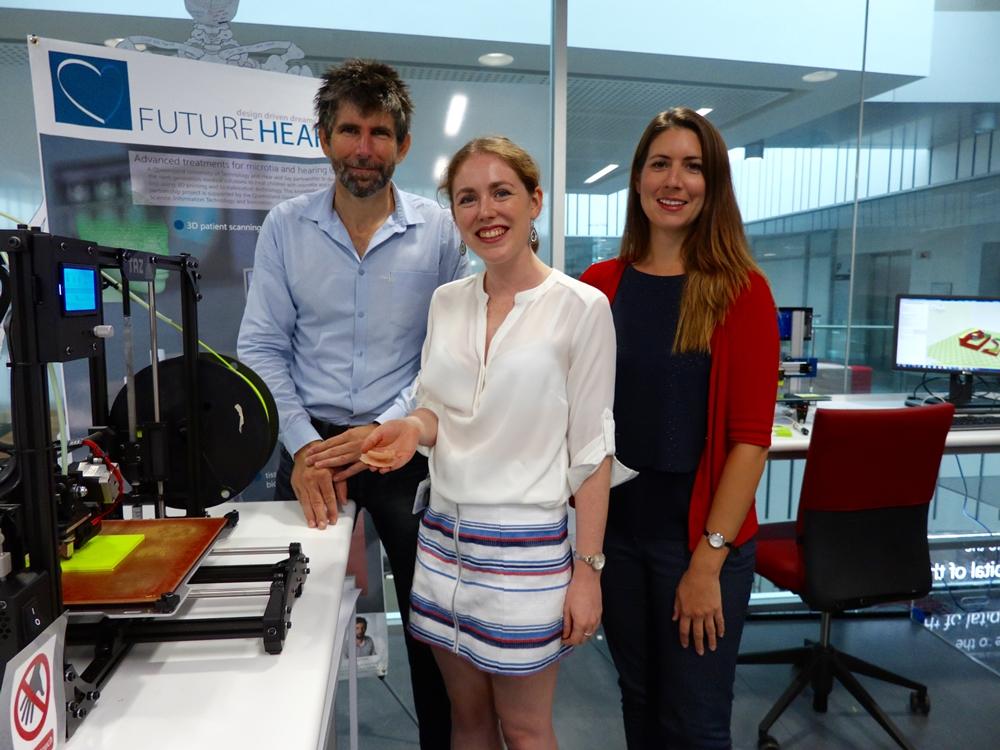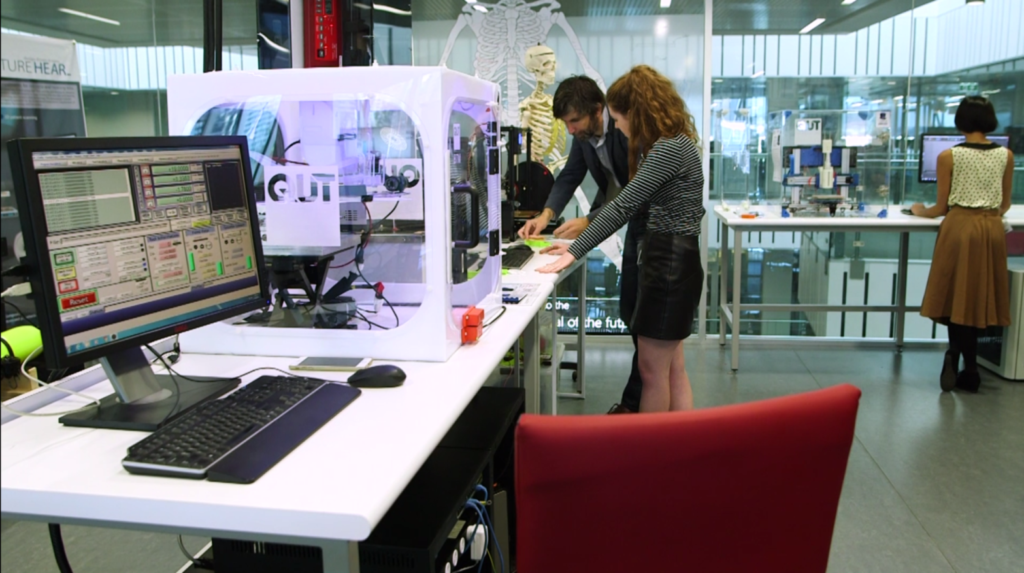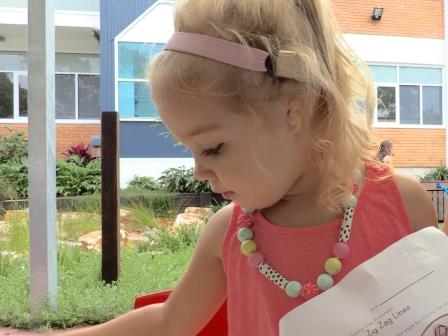 When you consider the industrial uses for 3D printing, the potential is staggering, whether you are examining the ways in which the technology is being used in aerospace, automotive, or a wide range of manufacturing uses. But as we explore the ways in which 3D printing is impacting the medical field, the inspiration is of a much deeper sort. Here, both emotion and awe are invoked as we see babies’ birth defects being reversed, adults who are able to walk again after receiving 3D printed titanium spinal implants, and even conjoined twins safely separated thanks to a first in 3D printed models.
When you consider the industrial uses for 3D printing, the potential is staggering, whether you are examining the ways in which the technology is being used in aerospace, automotive, or a wide range of manufacturing uses. But as we explore the ways in which 3D printing is impacting the medical field, the inspiration is of a much deeper sort. Here, both emotion and awe are invoked as we see babies’ birth defects being reversed, adults who are able to walk again after receiving 3D printed titanium spinal implants, and even conjoined twins safely separated thanks to a first in 3D printed models.
While most of those examples are in the context of major surgeries, with 3D printing, insurance companies are still not always on board. Surely in the future they will be though, as they begin to see the long list of benefits. And that brings up the question of finances within the industry, as we see so many startups forging ahead one by one, bringing forth innovations that are often quite complex and obviously often require substantial capital to launch. And even when a new 3D printed invention may be one that is able to change the lives of those in need, as well as advancing bioprinting further, that doesn’t mean that the money just magically appears.
This is an important subject to bring to light, as we spend a lot of time learning about new products and implants, but little time discussing how much it costs to actually put them into production. And to think that a child might not be helped simply because a government is not supporting their hardworking, talented researchers is sad indeed, touching on a current situation in Australia where the Queensland University of Technology and the Brisbane-based Hear and Say Centre have come together for the FutureHear project, which aims to create 3D printed prosthetic ears for children who suffer from microtia. The condition, which occurs in one out of 6,000 children, involves the outer ear being underdeveloped or missing altogether.“It is often associated with atresia, a condition where the ear canal is not present,” states the team. “Unfortunately, microtia impacts the emotional and psychological health of these children and their families.”
Funding is a definite problem, and this isn’t the first story of its kind, as recently we wrote about the difficulties in receiving health fund rebates in Australia for 3D printed medical implants. Again, the ability to work as forerunners in medical 3D printing is being squashed while the government delays and ignores.
This behavior is not sitting well with researchers and medical professionals. In this latest context, Mia Woodruff, an associate professor at QUT’s Institute of Health and Biomedical Innovation, says their work and innovative research has ‘fallen through the cracks’ in terms of being able to receive much-needed, very valuable government funding. Not only are individuals in need potentially missing out, but Australia is missing their chance to lead the rest of the world with such a medical device.
Rather than turning their backs on all of their research and development and giving up, the team is persisting, and now looking toward an alternate source in crowdfunding platform Pozible so that they can help children with microtia lead a normal life.
“We have the people, we have the resources, we just don’t have the research funds to enable us to do that project, so we’re turning to crowdfunding, because the people get it,” said Woodruff.
“…The public can help us, because the government at the moment are not enabling this project to proceed.”
The Hear and Say Centre recently held their annual workshop for microtia. Attending was Angelika Walton, whose four-year-old son has two underdeveloped ears.
“We don’t know what the future, exactly, will bring but we’re really impatient and quite excited by the prospect of everything that’s going on now,” Walton said, injecting some humor as she explained that currently they are trying to decide whether her son’s ears will be made to look like hers or her husband’s.
“It will be very exciting, but every ear is different so it would be nice for him to have his own unique ones,” she said.
The crowdfunding approach is not only something new, but a ‘huge leap,’ said Dimity Dornan, Hear and Say Centre executive director.
“It is absolutely a world first, when we can get to the stage where we’re biofabricating the child’s ear with the child’s own skin and cartilage cells,” she said. “When that stage is reached, it is absolutely a world-first but what we are doing is, firstly, generating the next-generation prosthetic ear, which will be far better than anything else around.”
“It’s exactly the same as the ear they have on the other side, usually, and it will be completely matched using computer scanning and an app in an iPhone.”
The Pozible crowdfunding campaign was launched in the hopes that they will be able to raise $200,000. The funds will be used to 3D print the ears, customized for each patient, with flexible material.
“The prosthetic could be achieved by the end of next year and, if the funds come in for that project, it will enable and catapult the tissue-engineered ear to be able to be hopefully realized within a five-year timeframe,” said Woodruff.
While the prosthetics—hopefully available by 2017—are of great value in themselves, what’s even more important is that the researchers see this as a stepping stone to furthering their main project: engineering tissue via bioprinting.
“The project goes beyond that – we’re also creating biofabricated ears,” said Woodruff.
“These are ears we’re also 3D printing, but we’re using biocompatible sterile materials and we are culturing those in a bioreactor in a laboratory with cells taken from a patient and we are creating a living ear that will be implanted by a surgeon.”
Three phases are anticipated:
- Creating customized ear prosthetics, to cost less than a pair of glasses.
- Making tissue engineered ears which are permanently implanted into the child with full biological function.
- Addressing hearing functionality and developing 3D printed electronics to incorporate a hearing component to the customized ears.
Their prosthetics will be much more affordably produced as they are able to:“This campaign is really focusing on stage one, so we are looking at 3D printing, scanning, printing, and modeling prosthetics,” clarified Woodruff.
- Use low-cost photogrammetry in scanning the ears, with no need for exposure to radiation or molding processes
- Speed up production through 3D modeling and 3D printing
- Use multi-materials printing to produce flexible, lifelike prosthetic ears
“Through the funds generated from this campaign we will be able to achieve our goal of having 3D printing facility at Hear and Say for our 3D printed prosthetics to be made in house in a familiar environment to the children and their families,” states the FutureHear team. “If we are able to exceed our target of $200,000 this will help start to fund our further research into biofabricated implants for ear reconstruction.”
Currently, if you decide to make a pledge, you can choose from numerous rewards. For as little as AUD $50, you can enjoy a tour of the 3D printing lab at QUT, and for a donation of AUD $100, you’ll get the chance to create a 3D printed piece of kaleidoscope artwork to be displayed in their reception area. At AUD $200, you receive a very special 3D printed phone case, personalized just for you. At the $1000 level, backers receive a 3D printing workshop and tour for five people with the FutureHear team. All rewards are expected to be ‘delivered’ by February of next year. Discuss further in the 3D Printed Ear Prosthetics forum over at 3DPB.com.
[Source: Brisbane Times; Pozible]https://youtu.be/28h-w-iprFc
Subscribe to Our Email Newsletter
Stay up-to-date on all the latest news from the 3D printing industry and receive information and offers from third party vendors.
You May Also Like
3D Printing Unpeeled: New Arkema Material for HP, Saddle and Macro MEMS
A new Arkema material for MJF is said to reduce costs per part by up to 25% and have an 85% reusability ratio. HP 3D HR PA 12 S has been...
3D Printing News Briefs, January 20, 2024: FDM, LPBF, Underwater 3D Printer, Racing, & More
We’re starting off with a process certification in today’s 3D Printing News Briefs, and then moving on to research about solute trapping, laser powder bed fusion, and then moving on...
3D Printing Webinar and Event Roundup: December 3, 2023
We’ve got plenty of events and webinars coming up for you this week! Quickparts is having a Manufacturing Roadshow, America Makes is holding a Member Town Hall, Stratafest makes two...
Intuitive Machines Debuts $40M Hub for Lunar Ambitions and 3D Printing Tech
Best known for its pioneering work in lunar exploration and its development of the Nova-C lunar lander, Intuitive Machines (Nasdaq: LUNR) has marked yet another significant milestone. The leading space...


![[Photo: Brisbane Times]](https://3dprint.com/wp-content/uploads/2016/09/1474178741914-1-282x300.jpg)































